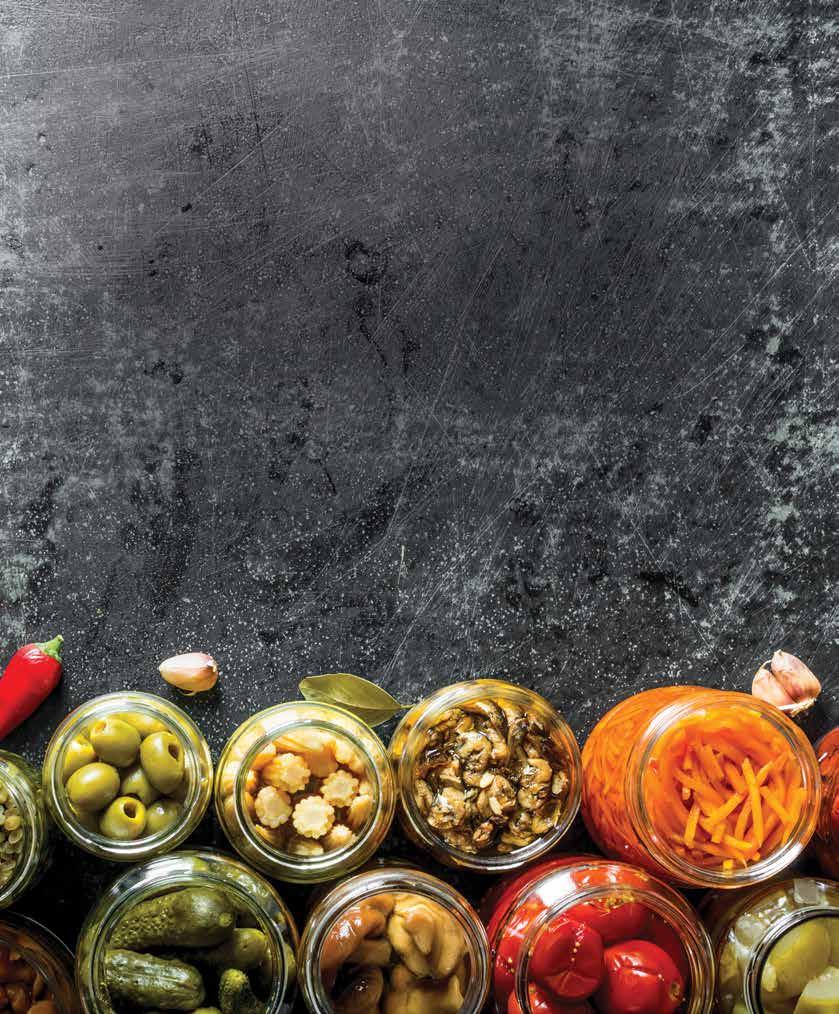
4 minute read
Food Preservation Season is Just Around the Corner
Gardeners throughout time have relished the fruits of their labor. Kneeling in dirt and picking through weeds is well worth a bite of your own luscious ruby red tomato or crispy cucumber. So why enjoy the splendor of your garden for only a few months out of every year? Preserving is a great way to get the home gardener through the winter months until next year’s planting. Not only is it rewarding to open a jar of your own home-grown produce but the economical and nutritional benefits are obvious.
The art of preserving food has existed since the beginning of civilization and has been vital to survival all throughout history. Every culture has utilized one or more methods to maintain fresh food. Often the methods used were dictated by the climate and conditions in which people lived. Foods were preserved in times of abundance to prepare for the desperately lean times that would surely lie ahead. As a result, many innovative techniques and advancements in food preservation were made during these extremely lean times. While we may not face the harsh living conditions of our forefathers, we have inherited from them a desire for fresh, wholesome food. It’s no coincidence, however, that we may be facing some tough economic times and to save money on food dollars the lost art of preserving is being rediscovered.
Advertisement
Not only can preserving foods yourself save money, it can be incredibly rewarding to place food on the table which you have grown and preserved yourself. Or better yet, to share with friends and family. And knowing exactly what goes in – or more importantly – what is not going into our preserved goods gives an added measure of control.
How does preserving work?
Fresh food is perishable for several reasons. Because of its high water content, an increased growth of undesirable microorganisms, an increased activity of food enzymes, increased reactions with oxygen, and adverse effects from moisture loss, all result in the breakdown and spoilage of food. The process of preserving slows down or stops the activity of microorganisms and enzymes and keeps food fresh and safe to consume.
Each method of preserving comes with its own set of benefits. Dabble in the different types – canning, drying, freezing, pickling, salting or fermenting – to discover which suits and works best for you. Equipment for preserving food can range from simple and cost almost nothing, all the way to complex and cost as much as you’re willing to spend. However, pressure canners and water-bath canners will probably only need to be purchased one time or may even be inherited from our mothers or grandmothers. They will last for years if taken care of properly. Make sure you visit your local County Extension Office to get your dial gauge pressure canner checked once a year for accuracy. If your dial gauge is off two pounds or more it can be a danger to the safety of your home-canned vegetables and meats.
Safety is essential when undergoing any preserving endeavor. Preserving methods have strict guidelines that must be followed and require that you follow instructions exactly or dangerous results can occur. Check with your local County Extension Office for recipes or look for recipes online from the National Home Food Preservation website which is operated by the University of Georgia Extension Service. It is very important to follow USDA-tested recipes because a deadly bacteria called “botulism” can be lurking in your unopened pressure-canned vegetables and/or meats if not canned properly.
Always choose food of the highest quality when preserving. Pick food that is free of bruises, discoloration and defects. Preserve as quickly as possible after harvesting - preferably within 12 hours. Wash and scrub food thoroughly before processing and always maintain proper sanitation to prevent the spread of bacteria.
Canning is not the only way to preserve the freshness of homegrown vegetables. Freezing is another great economical and easy way to preserve. Look for an article next month on freezing.
When storing preserved foods, be sure to clearly label the foods you have preserved both with contents and date preserved. Preserved food will not last forever. It is important to know when your products’ shelf life has expired and when foods should be discarded; you can find this out from your local County Extension Office. Labeling also helps to keep current when rotating your preserved food supply.
If you would like to learn more about preserving your own foods at home, whether you grow your own or you purchase from a local farmers market, visit our website at www.aces.edu/foodsafety/ and see if there is a class being offered near you, or if you just have questions contact your local County Extension Office or Angela Treadaway the Food Safety & Quality Regional Agent at treadas@aces.edu or at 205-410-3696.







